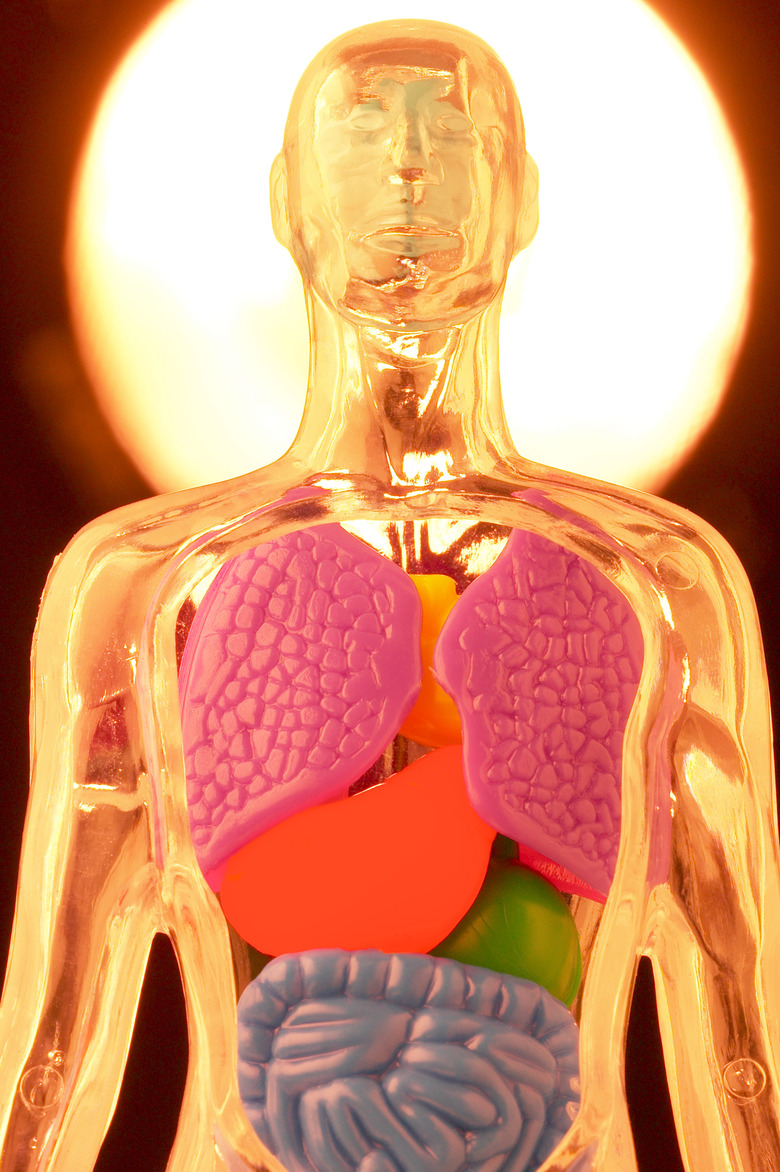Easy Ways To Recognize Bones In Anatomy
Anatomy is among the hardest life-science classes to master, and learning to recognize individual bones is a big part of the challenge. Most of the difficulty comes down to the fact that anatomy requires you to memorize a large amount of information. Consistent study, effective memorization techniques, and tools such as flashcards can help.
Remember Mnemonic Devices
Remember Mnemonic Devices
Create rhymes and songs that help you to remember the names of bones. The acronym PEST OF 6, for example, represents the six cranial bones — the parietal, ethmoid, sphenoid, temporal, occipital and frontal. In this case, the numeral 6 helps you to remember that there are six bones in total. Other mnemonic tricks relate to the spelling of bones. For example, if you get the bones of the lower leg mixed up, just remember that the TIBia is the thick inner bone and the FIBuLa is the fine, fluted and lateral. Many variations on mnemonics exist, and many teaching assistants and professors pass on their favorites.
Drill with Flashcards
Drill with Flashcards
Make flashcards or purchase premade ones that cover the bones and other aspects of anatomy. Making your own can save you money, and the process of writing them out becomes a study session of its own. Just pay attention as you write out the names so you don't spell any words incorrectly. Store-bought cards cost more and may use slightly different terminology than is used in your class. But chances are, they are completely accurate.
Teacher-Inspired Materials
Teacher-Inspired Materials
Professors may offer other materials to help you learn to recognize bones. Some professors and textbooks offer CD-ROMs with digital flashcards or even computer models of bones to study. Often, professors may record their lectures or feature extra lectures online, which can be valuable study tools. Take full advantage of any resource your professor offers.
Form Study Groups
Form Study Groups
Join or create a study group to review class material and learn the names of bones. This allows you to pool your knowledge with other students learning the same subject. Group members can drill each other on the details of bones, using flashcards or other study techniques. For example, put your heads together to come up of mnemonics or take turns practicing with flashcards.
Cite This Article
MLA
Boumis, Robert. "Easy Ways To Recognize Bones In Anatomy" sciencing.com, https://www.sciencing.com/easy-ways-to-recognize-bones-in-anatomy-12761304/. 3 February 2014.
APA
Boumis, Robert. (2014, February 3). Easy Ways To Recognize Bones In Anatomy. sciencing.com. Retrieved from https://www.sciencing.com/easy-ways-to-recognize-bones-in-anatomy-12761304/
Chicago
Boumis, Robert. Easy Ways To Recognize Bones In Anatomy last modified August 30, 2022. https://www.sciencing.com/easy-ways-to-recognize-bones-in-anatomy-12761304/
